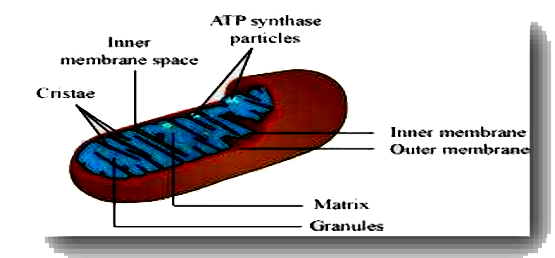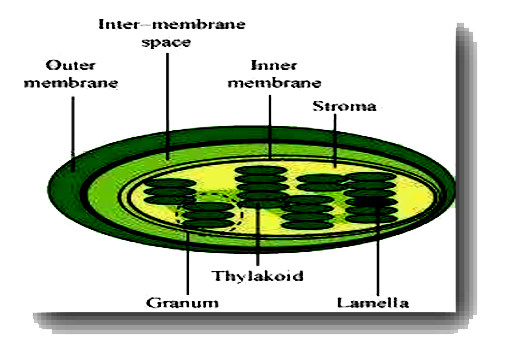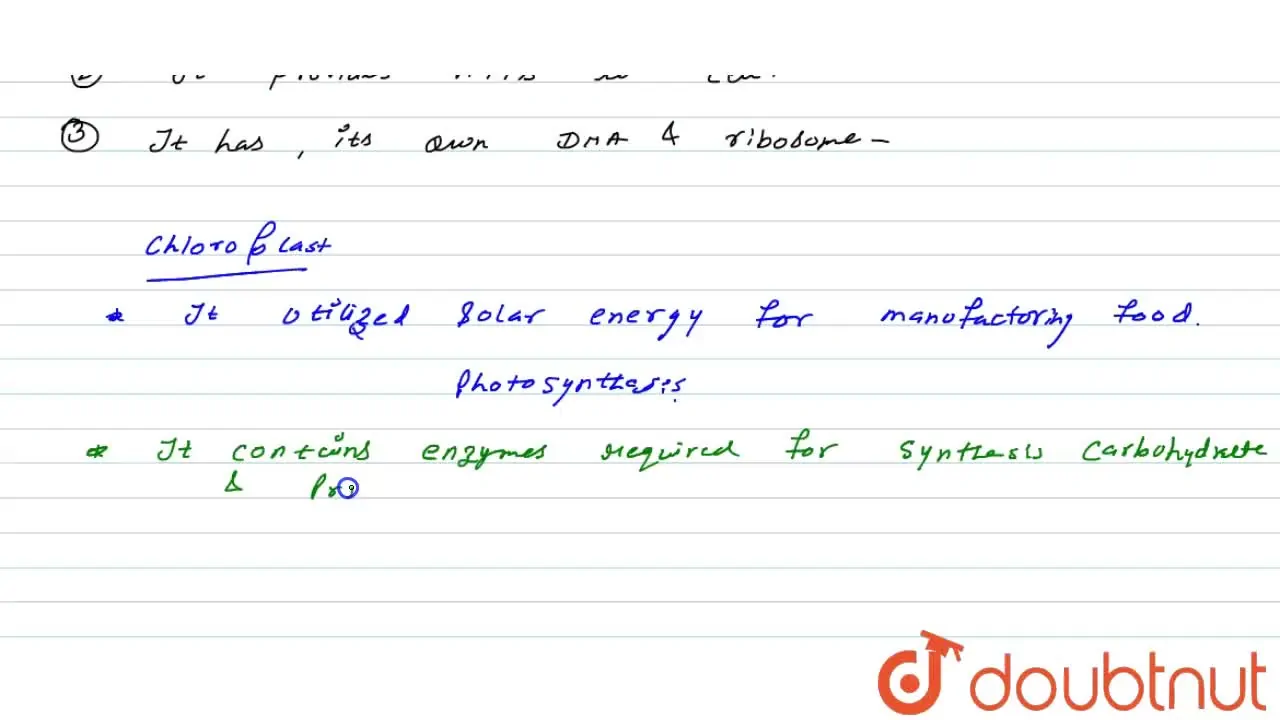Name two cell-organelles that are double membrane bound. What are the characteristics of these two organelles? State their functions and draw labelled diagrams of both.
Video Solution
Text Solution
Mitochondria and chloroplasts are the two organelles that are double-membranebound.

Characteristics of the mitochondria
Mitochondria are double- membrane-bound structures. The membrane of a mitochondrion is divided into the inner and outer membranes, distinctly divided into two aqueous compartments – outer and inner compartments. The outer membrane is very porous (containing the organelle), while the inner membrane is deeply-folded. These folds are known as cristae. Cristae increase the surface area inside the cell. They are the sites for ATP-generating chemical reactions. The membrane of a mitochondrion contains specific enzymes meant for specific mitochondrial functions. Hence, the mitochondria are the sites for aerobic respiration. They have their own DNA and ribosomes. Thus, they are able to make their own proteins. This is why they are considered as semi-autonomous organelles
Characteristics of chloroplasts Chloroplasts are double-membrane-bound structures. They are divided into outer and inner membranes, further divided into two distinct regions:
(i) Grana are stacks of flattened discs containing chlorophyll molecules. The flattened membranous sacs are called thylakoids. The thylakoids of adjacent grana are connected by membranous tubules called stroma lamellae.
(ii) Stroma is a homogenous mixture in which grana are embedded. It contains several enzymes that are used for the synthesis of carbohydrates and proteins. It also contains its own DNA and ribosomes.

Functions of the mitochondria:
(i) They are the sites for cellular respiration.
(ii) They provide energy in the form of ATP for all vital activities of living cells.
(iii) They have their own DNA and ribosomes. Hence, they are regarded as semiautonomous organelles.
(iv) They have several enzymes, intermediately required for the synthesis of various chemicals such as fatty acids, steroids, and amino acids.
Functions of chloroplasts:
(i) They trap solar energy and utilise it for manufacturing food for plants. Hence, they are involved in the process of photosynthesis.
(ii) They contain the enzymes required for the synthesis of carbohydrates and proteins.
|
Updated on:21/07/2023
Related Playlists
Similar Questions
Name cell organelles having double-membrane envelope.
View SolutionName the cell organelles without a limiting membrane.
View SolutionState two characteristics of nerve cells.
View SolutionName any organelles which are bound by two membranes?
View SolutionName the cell organelles bounded by single unit membrane.
View SolutionName an organelle of the cell which is not membrane-bound.
View SolutionName any cell organelle which is non-membranes.
View SolutionMembrane bound organelles are absent in
View SolutionWhich cell organelle is not bound by any membrane?
View SolutionName two semiautonomous cell-organelles.
View Solution


